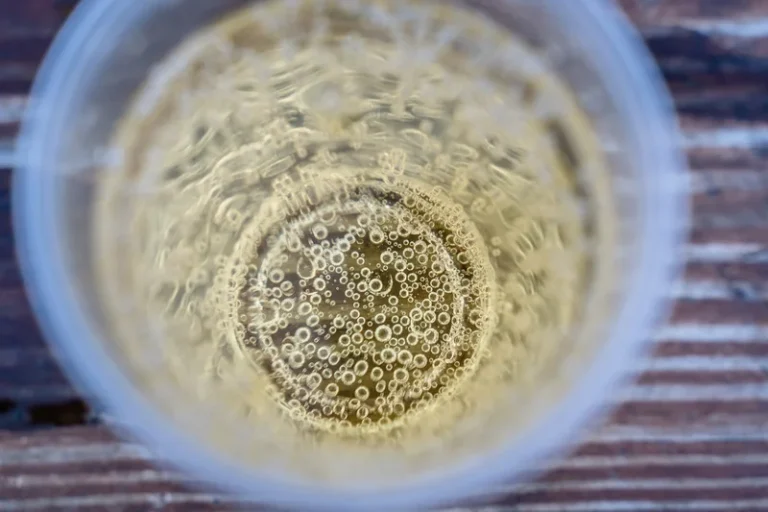Alcoholic Cardiomyopathy: Overview, Cardiac Effects of Alcohol, Quantity of Alcohol Intake in Cardiac Disease

Kino et al22 found increased ventricular thickness when consumption exceeded 75 mL/d (60 g) of ethanol, and the increase was higher among those subjects who consumed over 125 mL/d (100 g), without specifying the duration of consumption. In another study on this topic, Lazarević et al23 divided a cohort of 89 asymptomatic individuals whose consumption exceeded 80 g/d (8 standard units) into 3 groups according to the duration of their alcohol abuse. Subjects with a shorter period of alcohol abuse, from 5 to 10 years, had a significant increase in left ventricular diameter and volume compared to the control group.
Cardiac Catheterization

Importantly however, Oxford House remember that much of this information can be derived or inferred from the results of noninvasive testing. Richardson et al showed an elevation of creatine kinase, LDH, malic dehydrogenase, and alpha-hydroxybutyric dehydrogenase levels in endomyocardial biopsy specimens taken from 38 patients with DC. Though physical activity remains important for good health, your doctor may warn you against athletic exertion that requires straining or short bursts of activity.

5. The effects of Moderate Consumption of Ethanol and Binge-drinking
- Subendocardial and interstitial fibrosis progressively appear in the course of ACM, usually in advanced stages 52,56.
- In the 1950s, evidence began to emerge that supported the idea of a direct toxic myocardial effect of alcohol, and research during the last 35 years has been particularly productive in characterizing the disease entity of alcoholic cardiomyopathy (AC).
- Additionally, the accepted ACM definition does not take into account a patient’s sex or body mass index (BMI).
In an effort to increase the frequency that clinicians recognize alcohol abuse, Skinner et al. (1986) created the Alcohol Clinical Index—a set of clinical signs and medical history items suggestive of alcohol abuse 28. Their results achieved 90% accuracy in defining a history of alcohol abuse for patients positive in at least four of these parameters (Table 1). Because the clinical signs can be gathered during a physical exam, and the questions administered in the medical history seem unrelated to alcohol abuse, it is more likely that valid information will be obtained 24. An alternative approach utilizes biochemical assays to differentiate individuals with ACM from other cardiomyopathies Wang et al. (1989). In summary, there appears to be a number of ways in which mitochondrial perturbations could contribute to both the development and progression of ACM.
1. Oxidative and Energy Disturbances in ACM
Apoptosis may be induced by ethanol through mitochondrial membrane permeabilization and the release of pro-apoptotic factors (cytochrome c) from the mitochondrial inter-membrane space to the cytosol. Chronic ethanol exposure, in combination with other stress signals, provides a trigger for cardiac apoptosis through activation of the mitochondrial permeability transition pore by physiological calcium oscillations 111. Also, low to moderate daily alcohol intake was proved to be a predictor of better prognosis for both ischemic cardiomyopathy and heart failure regardless of the presence of coronary disease1,2. Myocardial impairment following chronic excessive alcohol intake has been evaluated using echocardiographic and haemodynamic measurements in a significant number of reports. In these studies, haemodynamic and echocardiographic parameters were measured in individuals starting an alcohol withdrawal program.
Alcoholic Cardiomyopathy
- In a nonhuman primate model (cynomolgus and rhesus monkeys) following 12 months of alcohol consumption (3.3 ± 0.2 g/kg alcohol/day), Cheng et al. found marked increases in plasma 8-isoprostane levels in animals consuming alcohol (124.8 ± 11 pg/ml) compared to controls (28 ± 5.1 pg/ml) (46).
- Although some authors contend that the initial event is the appearance of hypertrophy, the majority accept that the core event is the loss of cardiomyocytes.
- Control of these alcohol-related systemic diseases, as well as the strict control of the presence of other heart risk factors (tobacco, cocaine, arterial hypertension, diabetes mellitus, or anemia) contributes to ACM improvement 10,20,23,37,52.
- In another study on this topic, Lazarević et al23 divided a cohort of 89 asymptomatic individuals whose consumption exceeded 80 g/d (8 standard units) into 3 groups according to the duration of their alcohol abuse.
- In all three ethanol groups, compared to control groups there was a significant increase in heart weight-to-body weight ratios.
In ACM, it is relevant to consider the treatment of the other alcohol-induced systemic damage, such as liver cirrhosis, malnutrition, and vitamin and electrolyte disturbances 2,11,52. Notably, in patients with a history of chronic alcohol consumption complicated by significant myocardial dysfunction and chronic malnutrition, re-feeding syndrome may increase the cardiac dysfunction. Therefore, physicians should be aware of the risk of new cardiomyopathy in patients with these overlapping diagnoses 144.
- Ricci et al. observed two distinct phases of robust oxidant generation in cardiomyocytes exposed to Ang II 111.
- Therefore, it is evident that ACM may develop with normal serum thiamine and electrolyte levels 38,66.
- If you are experiencing symptoms of heart disease, a provider may start with a physical exam, listening to your heart for any sign of a heart murmur.
- Collectively, alcoholism creates numerous problems and the changes in cardiac function and rhythmicity point towards dysfunction at the cellular level that are likely to be multigenic.
- These studies suggest that in patients presenting with no clinical signs of heart disease, impaired diastolic function may serve as an early sign of ACM, while systolic dysfunction may represent move metn along the continuum towards failure.
Indeed, the first account of the possible harmful effects of alcohol specifically on heart muscle was reported in the latter half of the 19th century. Expressions referring to “the heart of a wine drinker in Tubingen” and particularly a “Munich beer heart” were used and known in Germany during this time13. Palpitations, dizziness, and syncope are common complaints and are frequently caused by arrhythmias (eg, atrial fibrillation, flutter) and premature contractions. In the setting of acute alcohol use or intoxication, this is called holiday heart syndrome, because the incidence is increased following weekends and during holiday seasons.
If the provider hears the whooshing sound that could indicate the heart is having trouble pumping blood normally, they will likely move on to diagnostic tests. Furthermore, Fernández-Solá et al30, when analysing a population of alcoholics, found a higher prevalence of DCM in alcoholics than among the general population. Specifically, among alcoholics they found a prevalence of DCM of 0.43% in women and 0.25% in men, whereas the described prevalence of DCM in the general population is 0.03% to 0.05%18,19. Additionally, the accepted ACM definition does not take into account a patient’s sex or body mass index (BMI). As women typically have a lower BMI than men, a similar amount of alcohol would reach a woman’s heart after consuming smaller quantities of alcohol.
Absorption levels of Indium-111 were high in 75% of patients who continued drinking and in only 32% of those who had withdrawn from consuming alcohol. Unfortunately Lazarević et al23, as in most of these studies, systematically excluded patients with a history of heart disease or with HF symptoms. It is therefore possible that most of these studies may have also consistently omitted most alcohol abusers in whom alcohol had already caused significant ventricular dysfunction. More specifically, atrial fibrillation with rapid ventricular response is a cause of arrhythmia-induced cardiomyopathy,61 which can potentially worsen LVEF in AC patients, on top of the direct toxic effect of ethanol, acetaldehyde damage, or the aforementioned genetic factors. Results from serum chemistry evaluations have not been shown to be useful for distinguishing patients with alcoholic cardiomyopathy (AC) from those with other forms of dilated cardiomyopathy (DC).
ACTIONS

This is because the ethanol molecule has a small size and is highly reactive, with many cell targets. In addition, ethanol has a widespread diffusion because of the potential for distribution though biological membranes, achieving targets not only in the membrane receptors and channels but alcohol cardiomyopathy also in endocellular particles and at the same nuclear compartment 29,99,100. This induces a variety of effects, since more than 14 different sites in the myocyte can be affected by ethanol 19,98. Specifically, ethanol disturbs the ryanodine Ca2+ release, the sarcomere Ca2+sensitivity 102,103, the excitation–contraction coupling and myofibrillary structure, and protein expression, decreasing heart contraction 86.


Interestingly, Wu et al. using carotid pulse measurements, observed a gender dependent effect in preclinical ACM (asymptomatic ACM)—that is, female patients displayed no deviation in carotid pulse measurements values for either PEP or LVET while males did 36. In contrast, Kupari et al. reported that alcoholic women presented with reduced ejection fraction 37. These studies suggest that in patients presenting with no clinical signs of heart disease, impaired diastolic function may serve as an early sign of ACM, while systolic dysfunction may represent move metn along the continuum towards failure.
Вы должны быть авторизованы, чтобы оставить комментарий.



Об авторе